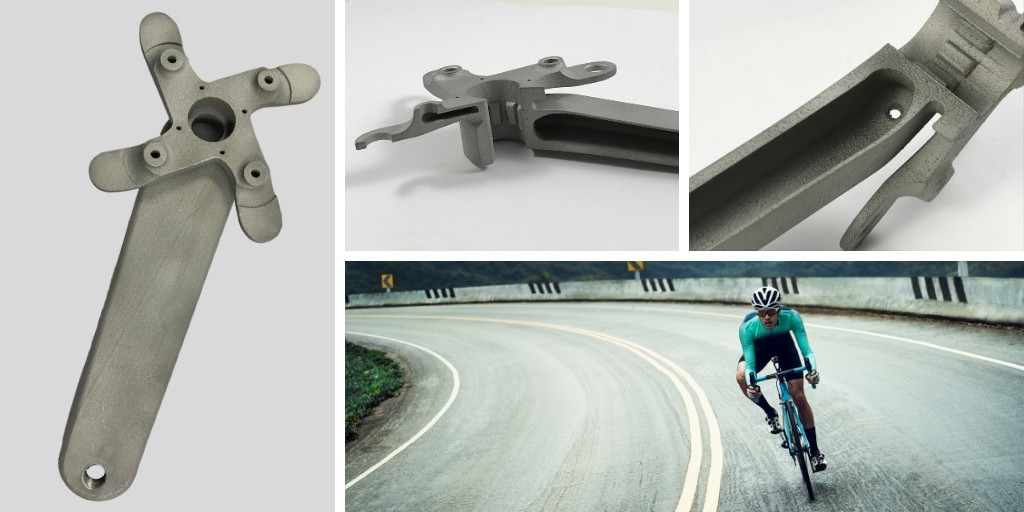Revealing the simulation-driven approach behind a 3D-printed bicycle crank
REVEALING THE SIMULATION-DRIVEN APPROACH BEHIND A 3D-PRINTED BICYCLE CRANK
At the annual CADFEM ANSYS Simulation Conference, the event around computer-aided engineering (CAE) and simulation in Europe, GKN Additive’s simulation team was awarded the “Best Paper Award” for the fatigue-resistant design of a selective laser melting (SLM)-manufactured Aluminum bicycle crank.
As a leader in engineering and product solutions, we are eager to discuss the latest developments in simulation technologies and bring our own simulation-driven manufacturing solutions to the table. This additively-manufactured pedal crank combines fatigue design, simulation processes, additive manufacturing and e-bikes into one state-of-the-art project.
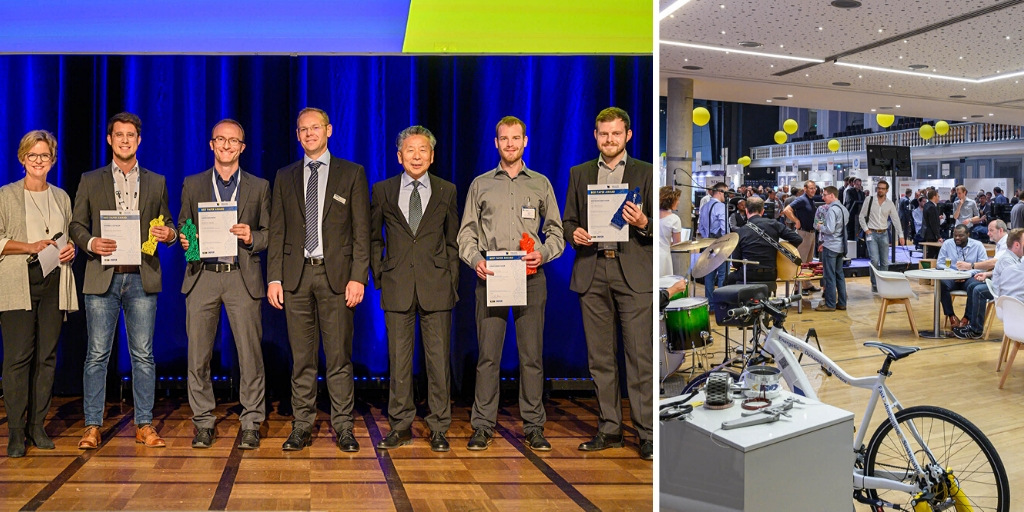
The e-bike inspiration
In the early days of project development, a team of dedicated engineers was working on designing and building an electric motor for an e-bike at the GKN Powder Metallurgy Innovation Centre. Looking to leverage all manufacturing solutions at our disposal, we discovered we could contribute to the e-bike’s production with some additive components.
After revisions and analysis, the decision was made to focus on the redesign of a bicycle pedal crank through additive manufacturing. Why a bicycle crank? Since this is a fatigue-loaded part and is weight-sensitive, it presented a great opportunity to work with different CAE tools like topology optimization, stress analysis and reduction, and fatigue evaluation.
What makes this particular endeavor so interesting is that we’ve applied tried-and-true simulation principles to additive manufacturing; specifically SLM.
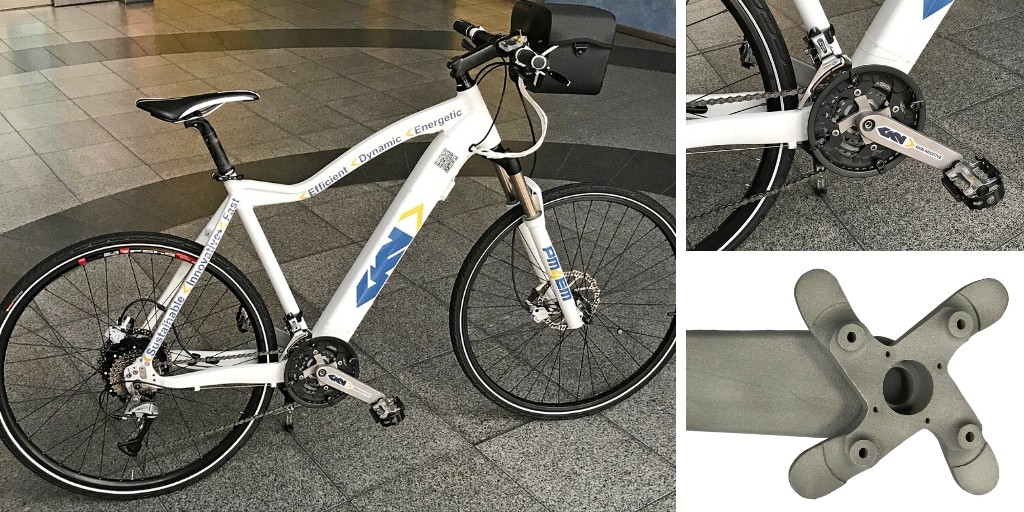
Demonstrator e-bike with the 3D-printed pedal crank
Optimizing design discovery
Redesigning the pedal crank for additive manufacturing opened up new design opportunities for us. Most importantly, we were able to generate a part with a complex, mostly hollow internal geometry. From the outside, the crank might not look like anything special, but looking into its cross-section, the additive advantages are clear to see.
Beyond this discovery, we wanted to demonstrate that standard design principles could be similarly applied to the SLM process. In other words, we were able to predict and determine the strength of the part based on its structure and the material fatigue properties before printing the physical part.
The design-finding process started with topology optimization using ANSYS Mechanical, a software solution that uses finite element analysis (FEA simulation) for structural analysis. This step provided a series of options for the structure of the component and showed us the structural-mechanical relationships in the pedal crank. A parameter study for the CAD model then generated the optimal cross-sections and wall thicknesses relative to the specified load cases. Subsequent steps included design and notch stress reduction using ANSYS SpaceClaim and ANSYS Mechanical. nCode inside Ansys also provided a lifetime estimation of the 3D-printed bicycle crank.
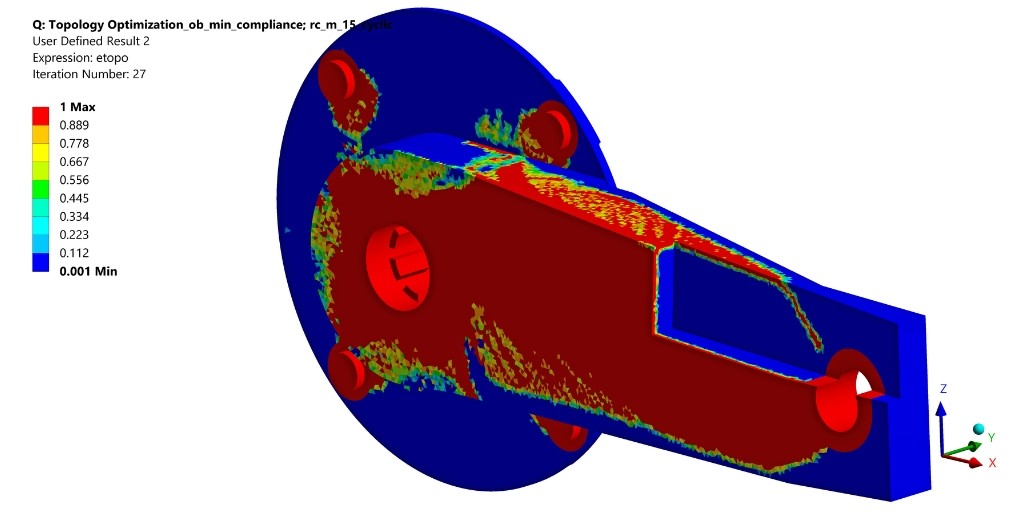
Topology and parameter optimization with ANSYS Mechanical for stress analysis
It starts with the powder
Of course, the simulation software tools we used would mean very little if we didn’t have extensive data on the additive manufacturing material. The AM material in question was AlSi10Mg, an aluminum alloy powder specifically for additive manufacturing with applications in the automotive and motorsport industries thanks to its lightweight and strength characteristics.
Knowing the material data of AlSi10Mg—specifically its tensile strength and fatigue strength—proved critical in the creation of a virtual prototype that would meet all the strength, weight and performance requirements of the bicycle pedal crank.
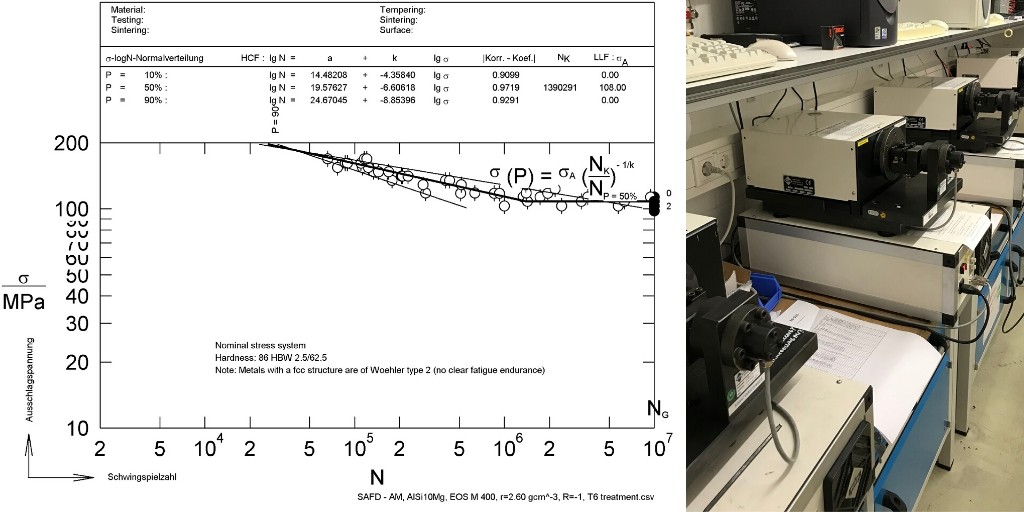
We recorded four SN-Curves with bending test machines to characterize the material fatigue properties of AlSi10Mg
With a steadily growing material property database for additive materials and with an expert simulation team, GKN Additive is uniquely positioned to offer start-to-finish support in the design and simulation of new products.
From theoretical to experimental
The collection of material data involves extensive experimental work; this consists of testing hundreds of material information to gather accurate fatigue data. Though a heavy workload, this information is crucial to our simulation work and to the application of CAE tools.
With the material data in hand and a process to follow part geometry generation and numerical strength analysis, we printed the aluminum bicycle crank on a selective laser melting system in order to compare its strength and fatigue resistance to that of its virtual counterpart.

Stress distribution (of the 1st principal stress) on an optimised bicycle crank made of AM AlSi10MgT6 and numerical Life prediction with nCode DesignLife
You can 3D print a component and test it, print the next one and test it, and so on and so forth - but this is not an efficient or sustainable approach. Simulation enables us to reliably predict the strength of components based on material and geometry, in turn creating confidence and trust in the strength of 3D-printed products. This is virtual product development.
Independent from the structure-mechanical calculations is the simulation of the additive build-up process itself. With the Ansys Additive Print Software, the component distortion can be calculated and the necessary supports can be generated.
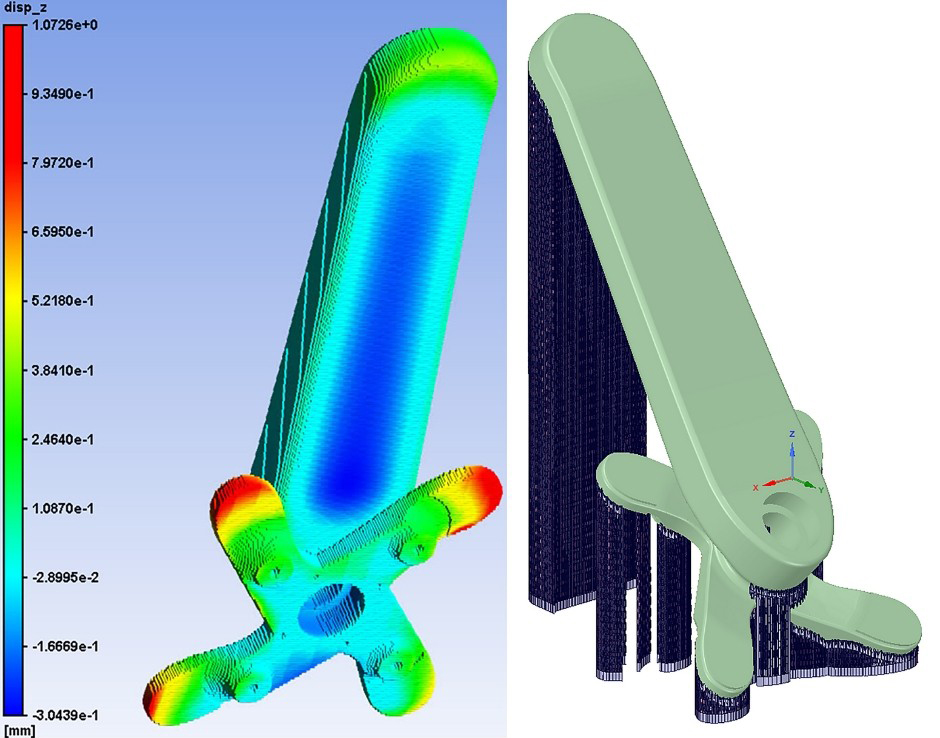
AM Process simulation with Ansys Additive Suite (left) and development of support structure (right)
At GKN Additive, we have the resources and expertise to ensure the viability and fatigue strength of a 3D-printed component using simulation. This eliminates most ‘guesswork’ during the design process and laborious testing of the finished parts. In short, we are applying a simulation-driven approach for fatigue design and testing it. If the virtual and physical part matches up, customers can move into production with confidence.
